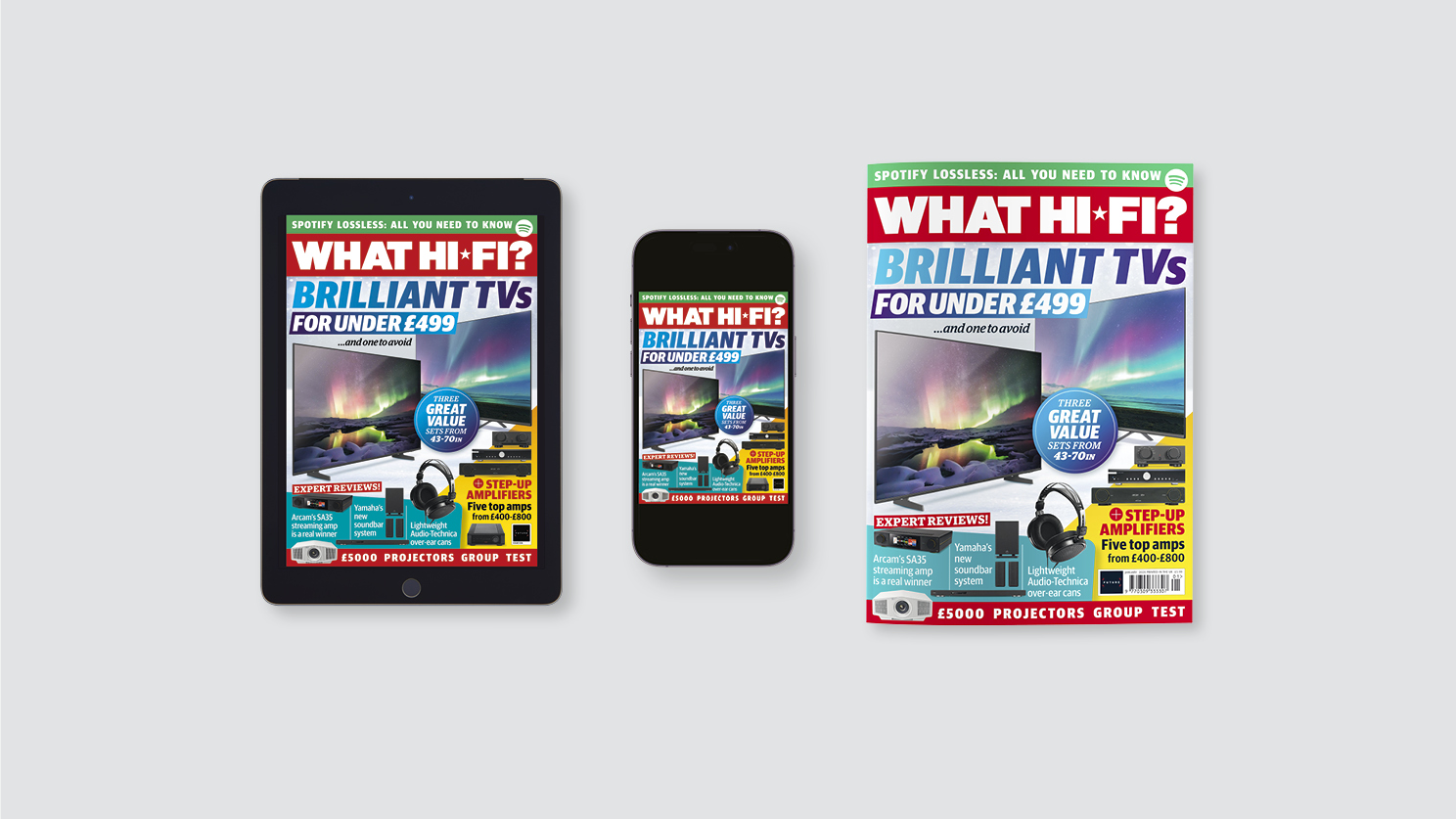What Hi-Fi? Verdict
Moon's 680D network streamer couples refined sound quality and fine build with a generous features set
Pros
- +
Refined, well-imaged presentation
- +
Articulate and fluid midrange
- +
Fine build and finish
Cons
- -
Needs more sonic punch
- -
Bluetooth not aptX HD
Why you can trust What Hi-Fi?
If you’re the kind of person who judges hi-fi by its specifications, high-end network streamers present quite a problem. On paper, there’s usually little to separate them from those available at a fraction of their price. The mass-produced budget offerings often lead the way in cutting edge technology, thanks to economies of scale and the sheer buying power of the larger companies that invariably make them.
In order for smaller brands such as Moon to compete successfully, they have to look upmarket to price points where obsessive attention to engineering detail is valued and sound quality takes absolute priority.
Don’t take that to mean that this Moon 680D streamer is in any way a stripped-out purist affair. Music streamers from the likes of Linn and Naim have shown that it’s possible to have an extensive features set and still deliver great sound, and this Moon simply reinforces that.
Features
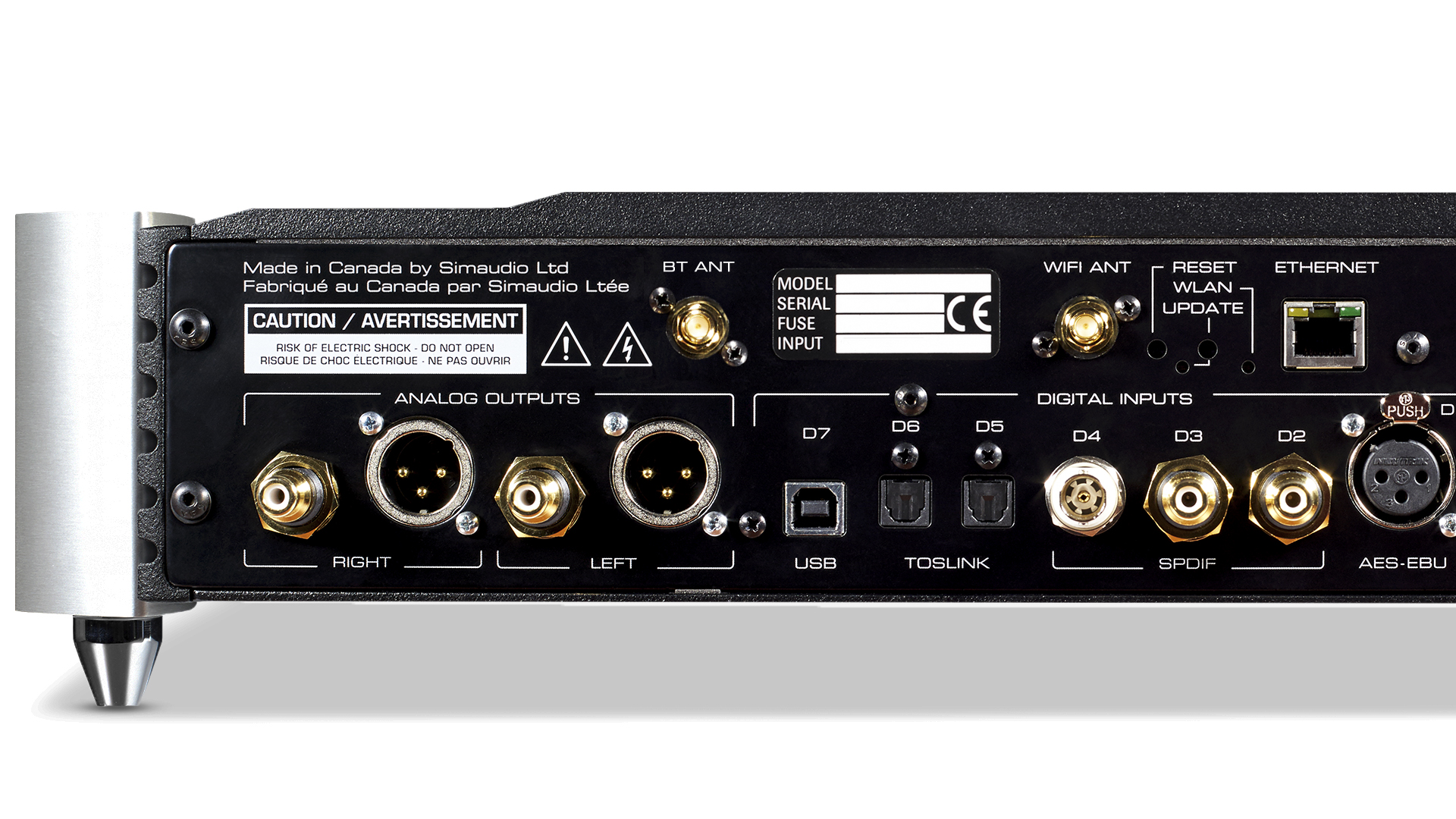
You’ll find no shortage of connectivity here. There’s an impressive array of digital inputs taking in USB, AES/EBU, optical, and coax in both RCA and BNC forms. There are nine inputs in total, though number eight is reserved for the built-in streaming module and input nine is for aptX Bluetooth (though we would have hoped for aptX HD in a newly released product at this level).
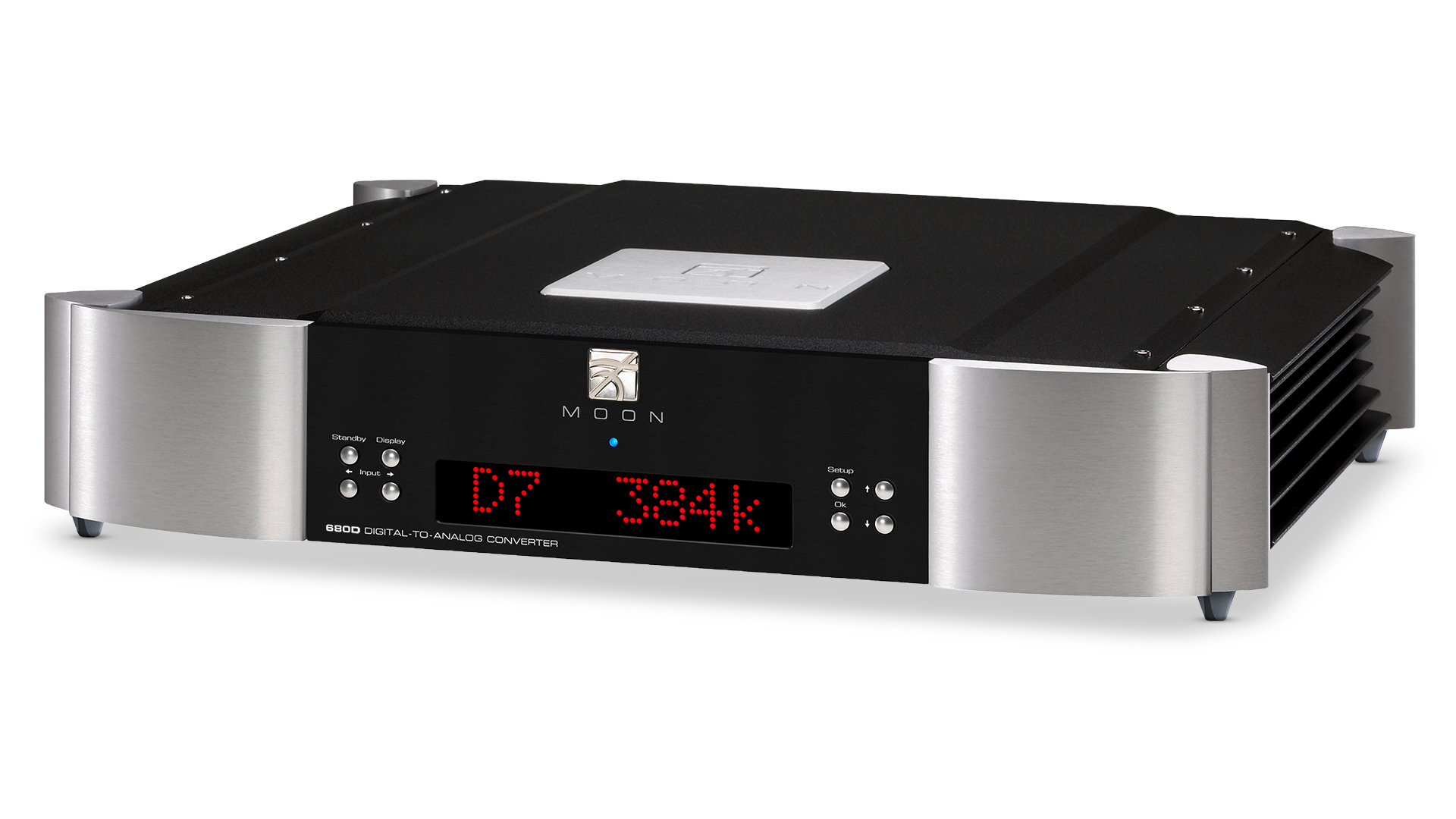
AirPlay 2 Yes
Roon ready Yes
Inputs USB, AES/EBU, SPDIF, optical, ethernet, wi-fi, aptX Bluetooth
Frequency response 2Hz - 100kHz
Dimensions (hwd) 10 x 48 x 43cm
Weight 18kg
While Bluetooth invariably falls short of the hard-wired inputs in terms of performance, we’re still happy that Moon has chosen to include it. Such an input makes the 680D a more inclusive device, allowing a quick listen from a friend’s phone or to provide better sound reproduction from a YouTube video.
You can connect the 680D to your home network wirelessly, but we would recommend taking the wired ethernet route – not that there’s anything innately wrong with Moon’s wireless implementation, more that the cable approach is always the most stable way to go.
The analogue outputs are the usual sets of single-ended RCAs and balanced XLRs. In our set-up, which includes a Burmester 088/911 Mk3 amplifier, paired either to the ATC SCM50 or Wilson Benesch Precision P2.0 speakers, the Moon’s balanced outputs sound bolder and more dynamic. We use the Naim ND555/555PS DR music streamer as our digital source with an Apple MacBook Pro (loaded with Audirvana music-playing software and plenty of hi-res music) providing the USB signal and general back up.
The latest hi-fi, home cinema and tech news, reviews, buying advice and deals, direct to your inbox.
Build
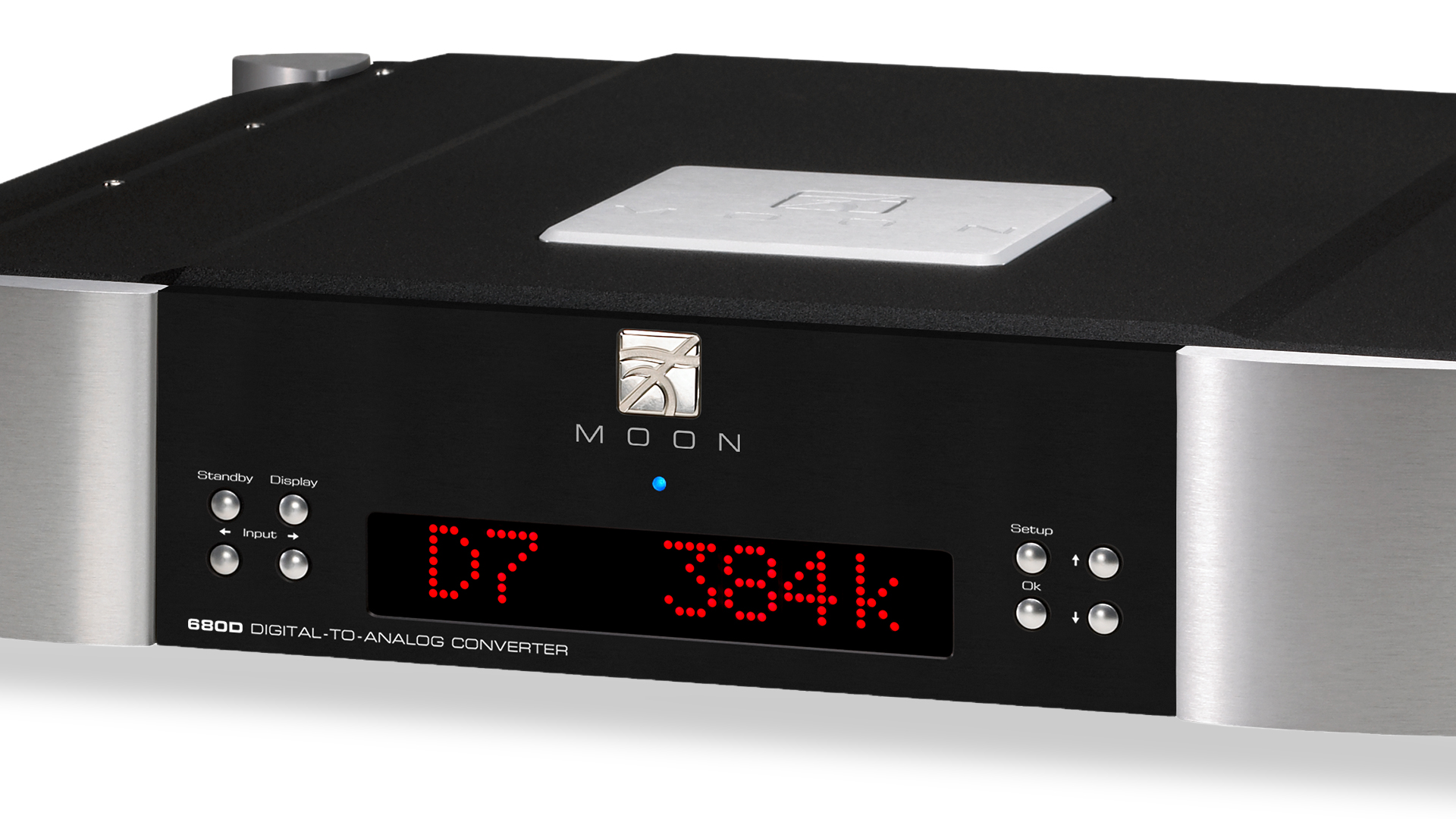
Look inside the 680D and it’s hard not to be pleased by the build quality on offer. We’re impressed with the care taken over the circuit layout and power supply arrangement. The 680D uses Moon’s MHP (Moon Hybrid Power) power supply module, as used in the company’s even pricier, reference products.
The MHP module mixes both traditional linear and switch mode technologies to deliver a stable, low-noise and power-efficient energy feed to the signal circuitry. The digital and analogue sections are powered by separate outputs from the supply to avoid unwanted interactions and optimise performance.
Those wishing to boost performance further can add an outboard power supply unit in the form of Moon’s 820S, which at £7200 ($8000, AU$14,000) is a pricey upgrade and would almost double your outlay. We don’t have one on hand for our review, but we can’t help thinking that most potential buyers will think that a jump too far. That said, our experiences with Naim, Nagra and others have shown that such power supply upgrades invariably improve sound quality dramatically.
Each of the nine digital inputs feed into an FPGA (Field Programmable Gate Array) that identifies the file type – whether that’s PCM, DSD or MQA – and re-clocks the signal accordingly. We have no complaints regarding the Moon’s file compatibility, which is up to 32-bit/384kHz PCM and DSD256 files and should, therefore, cover pretty much everyone’s music file collection.
The digital heart of the 680D is based around ESS Sabre’s ES9028PRO DAC chipset. The chip packs no fewer than eight DAC chips, configured so that four combine to create the signal for each channel. The output of each chip is carefully calibrated so that none of them are set to work at the same level. Doing this is claimed to reduce the effect of any distortion that may be common at any specific output level.
Great care has been taken with the digital clocking system, too. It is carefully positioned to minimise jitter effects and has a dedicated precision voltage regulator to ensure a stable power feed. Once the digital music stream is converted to analogue, it passes through a fully balanced output stage that, as expected, is packed with high-grade components.
Sound

The Moon 680D sounds pretty good from cold but improves considerably over a few weeks of use. Given time, it becomes clearer and more transparent, gaining an appreciable amount of openness in the process.
We start with the digital inputs, which prove remarkably consistent. In our experience, many high-end companies struggle to make their USB inputs sound as good as the others. We suspect that has something to do with the fact that the USB receiver module tends to be a ready-made unit bought from third-party suppliers that may not match up to the standards of the rest of the DAC circuitry. We’re pleased to report that Moon avoids any such issues.
Regardless of the input chosen, the sonic signature is familiar enough. The company’s products have always been smooth and refined performers and this one is no different. It’s a friendly and accommodating balance – one that isn’t easily provoked by bright or aggressive recordings.
That doesn’t mean the 680D isn’t revealing – this is a wonderfully detailed-sounding product – but rather that its easy-going nature means it doesn’t tend to get ruffled easily. We play Hans Zimmer’s The Dark Knight Rises OST (24-bit/192kHz) and the Moon delivers a large-scale and sumptuous sound.
There’s also a trace of extra warmth to the sound compared with hard-line neutral alternatives, such as the pricier dCS Bartók. That warmth isn’t overdone; it simply adds an attractive bloom to the sound, making it less demanding to listen to over longer listening sessions.
Instrumental textures come through convincingly and it’s easy enough to follow subtle musical strands in the dense production. We’re pleased with the Moon’s composure when pushed hard, as well as its ability to organise all that information into a cohesive and musical whole.
It’s rare to hear a network streamer render such an expansive and layered soundstage while populating it with such tightly focused instruments. Everything stays stable even when the music becomes busy – which, as you'll know if you’ve heard this recording, is saying something, as Zimmer doesn’t hold back on his trademark bombast.
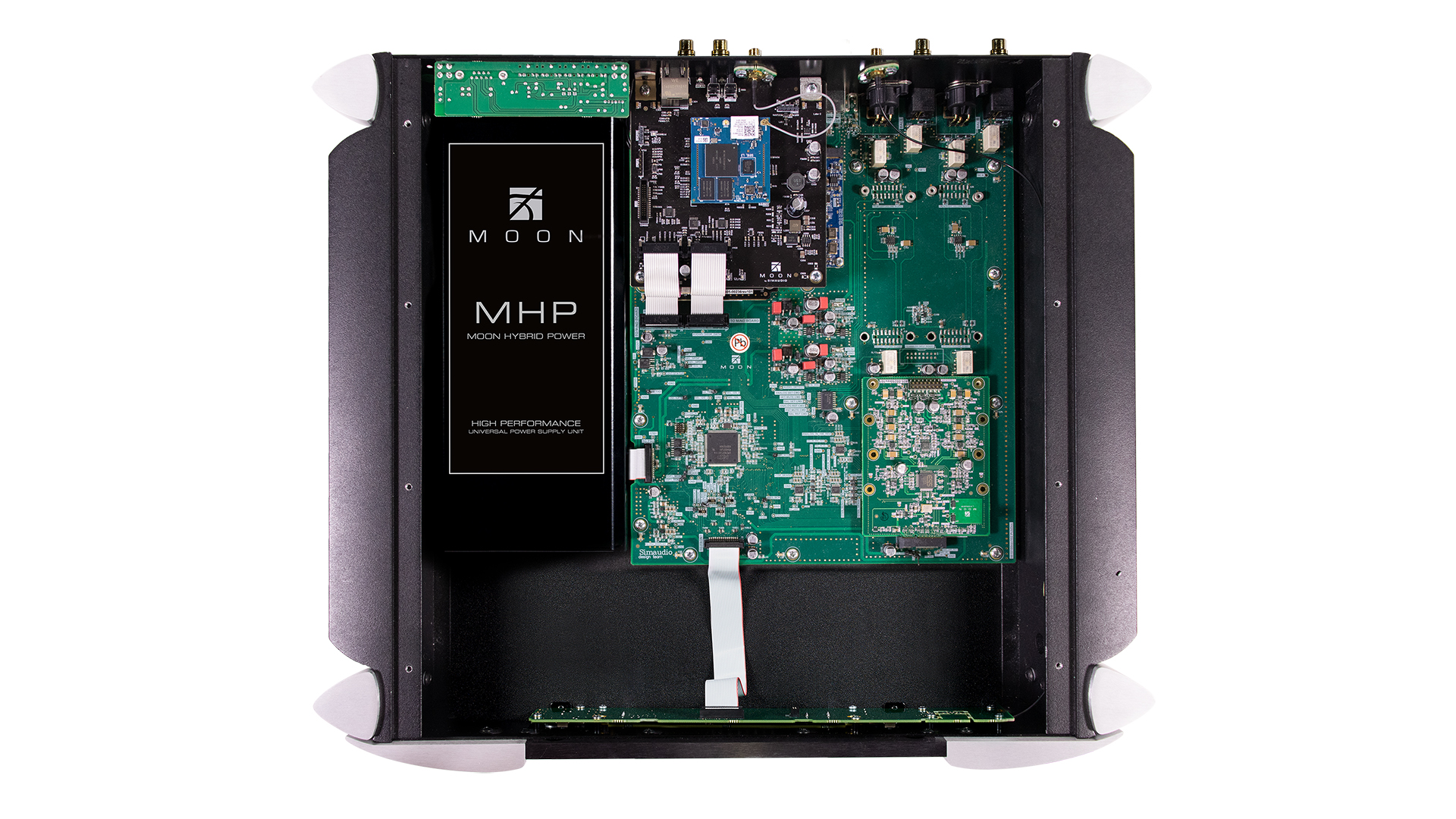
But here, the Moon starts to split opinion. While loving its civilised approach to music making, we can’t help but wish for more muscularity when it comes to expressing dynamic contrasts and punching out crescendos. It’s not that the Moon can’t do these things, more that it sounds a little restrained while doing them.
Restraint is something that shouldn’t suit Kanye West’s Yeezus, yet the Moon’s agility and articulation make listening to this album a pleasure. Sure, a little more directness and rhythmic drive would be nice, but there’s no denying that the Moon can entertain. It conveys the attitude of the music well and there’s never any doubt as to what West wants the listener to feel.
We switch to the onboard streaming module and find it to be a slick performer. There’s a dedicated app, and it works well. Moon has been making streaming products for a number of years now and that experience tells in the consistency and stability of operation.
Over our test period, everything operates as it should, without issue. Alongside the ability to stream music files from a NAS drive on your network, the app also provides access to Tidal Masters, Qobuz Sublime+ and Deezer Hi-Fi. The 680D is AirPlay 2 and Roon-ready too. There really is little to complain about on the features front here.
Sonically, the balance matches what we hear through the digital inputs. There’s the same grace under duress and the kind of sophisticated and cultured delivery that works well across a range of recordings and genres. It’s an engaging listen, though given the expectations of the price point we still have questions over its dynamic punch and ability to communicate the momentum in a piece of music. These shortcomings are more obvious here than when using other digital sources (bar through Bluetooth, of course).
Verdict
The streaming module is essentially the same as that used in the company’s Mind 2 network streamer, which is available for £1950 ($1950, AU$3199) and looks like a good performer for the money. Whether it’s a good enough source to make the most of such an ambitious DAC design is open to question.
Regardless, there’s no denying that the 680D remains a strong performer overall. It’s slick in use, nicely made and built with care. We have no complaints about file compatibility, and we’re huge fans of its refined and articulate sonic nature. At the very least it deserves a place on the shortlist.
SCORES
- Sound 4
- Features 5
- Build 5
MORE:
Read our guide to the best music streamers
Here's how to add a streamer to your hi-fi system
Read our dCS Bartók review
What Hi-Fi?, founded in 1976, is the world's leading independent guide to buying and owning hi-fi and home entertainment products. Our comprehensive tests help you buy the very best for your money, with our advice sections giving you step-by-step information on how to get even more from your music and movies. Everything is tested by our dedicated team of in-house reviewers in our custom-built test rooms in London, Reading and Bath. Our coveted five-star rating and Awards are recognised all over the world as the ultimate seal of approval, so you can buy with absolute confidence.

